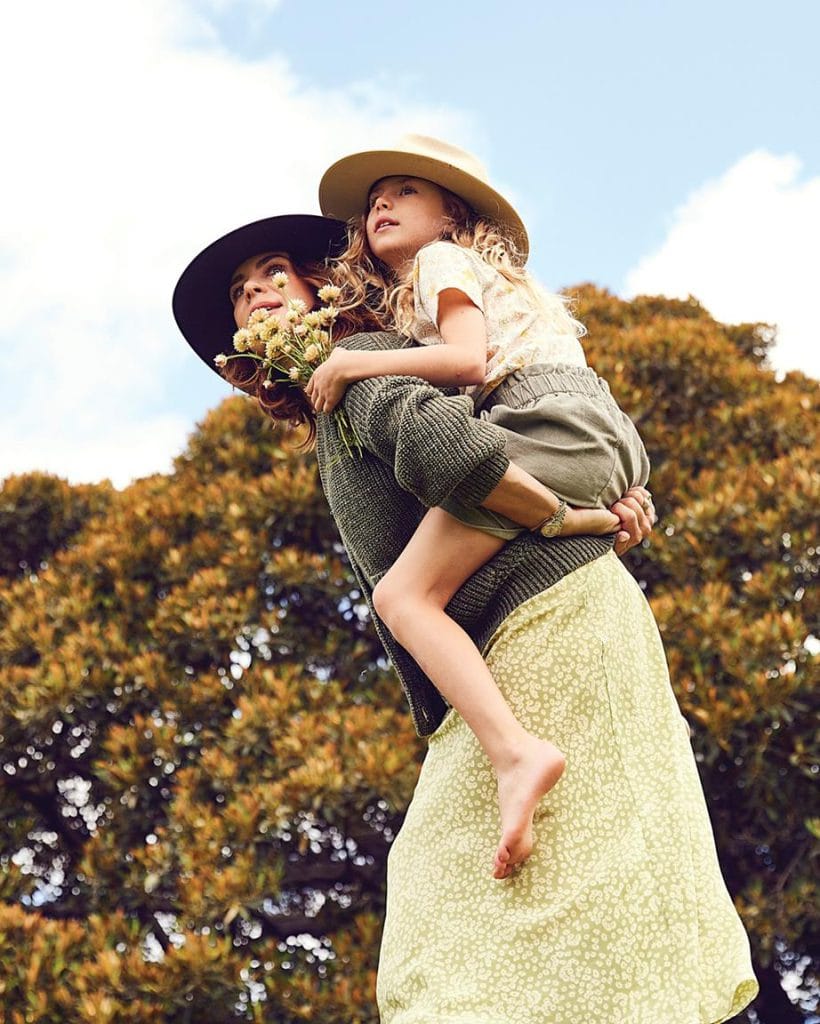She reminds me of the young girl I once was, I once said.
For Kate Ritchie, watching her daughter Mae, age 8, sketch, dance, play, and discover enjoyable new ways to express herself creatively, is almost like stepping into a time machine.
Young Kate was entering the television industry for the first time at the same age, and her portrayal of Sally Fletcher in Home and Away catapulted her into the spotlight.
Because of this, Kate’s childhood was spent juggling the demands of school and employment, and she only had the occasional opportunity to play with her three siblings in their suburban backyard.
“I’ve been going through a period of late where I’ve been really reflecting on that,” she says to The Weekly today.
“I was thinking about how I did what I did and if I would want Mae to go through that experience after seeing this tiny eight-year-old. I occasionally had the thought, “My goodness, she looks just like me.” She undoubtedly shares her father’s (former NRL player Stuart Webb) good looks, but she also reminds me of a younger version of myself.

Mae’s creative interests have been fostered by Kate, who jokes in fake dread that her daughter would like to launch her own YouTube channel, “which is never happening”.
“I urge her to try a wide range of things. On Saturdays, she participates in swimming, gymnastics, and dancing. Because the only extracurricular activities I never engaged in as a child were playing sports or learning a musical instrument (I was too busy working on a TV show). They were additional activities that I found difficult to fit in with everything else.Everyone at school assumed that I had the best job in the world because I could leave school early, despite the fact that everyone on Home and Away believed that I just worked part-time. But when you put it all together, it’s a bit much! I simply want to make sure I’m not putting any pressure on Mae. She shouldn’t feel like she belongs to anyone but herself, in my opinion.

Kate’s most recent endeavour is the result of her desire to inspire people without pressuring them or to achieve the seemingly impossible.
She had previously written two children’s books, so she had been considering writing a lifestyle book that would provide a glimpse into her relationship with Mae without placing undue pressure on other parents to do the same.
Thus, Everyday Play came into being.
It is a pleasantly simple book that is jam-packed with a plethora of activities that encourage kids to create, cook, write, draw, and just be.
“I kept saying that I wanted it to be gentle,” says Kate. “That is why many charming inclusions of things like doing nothing at all are present. You’re allowed to feel bored. or to be foolish. But on other days, tick every box. just having a large number of activities that are broken down according to how you are feeling that day. I didn’t want this to be yet another task for you to complete. to feel like “to be a good parent I need to do X, Y, and Z out of Kate’s book on Saturday” or to put pressure on other parents to have the same sort of experiences.

Additionally, she was committed to making the book available.
Nothing in the book requires you to buy supplies or ingredients; everything you need is available in nature, your pantry, or your own imagination.
Not everyone has access to everything; not everyone lives near a beach or has a bathtub in their home, she says.
“These days, every toy you buy for your child comes with 20 more that you need to acquire. I had a pogo stick and a My Child doll when I was a kid. There is a piece of counsel that I have consistently clung to. The nurse at the childbirth education seminars I attended informed me, “Kids and newborns don’t require everything. All they need is you. And as I see Mae develop, I believe that to be more true than ever. She enjoys everything, but she doesn’t require everything.

According to Kate, Everyday Play is a tool for parents, grandparents, aunts, uncles, and friends, but it’s also a book that youngsters can read independently with ease.
“As much as we think that kids want to be with us all the time, they do like to have time on their own,” she chuckles.
Mae actually performs very well when playing alone. It’s sweet to hear her chatting in her bedroom as she speaks to her dolls, toys, and other such objects.
And so Kate asked a number of her nieces and nephews, in addition to Mae, to contribute to the book. The pages are jam-packed with artwork they’ve produced, suggestions for games, and ideas inspired by the play she’s seen the tribe of cousins acting out together.
“Are you sure this isn’t too simple? She wonders, “Are kids still interested in building tents. Then I’d see Peter and Leroy, my young nephews, constructing a fort out of an old skateboard and a small ladder. They are more adept at it than we are, so you could lay a roll of paper on the ground and they would still do well. We get distracted or are overly self-aware or self-conscious. We no longer know how to play.
